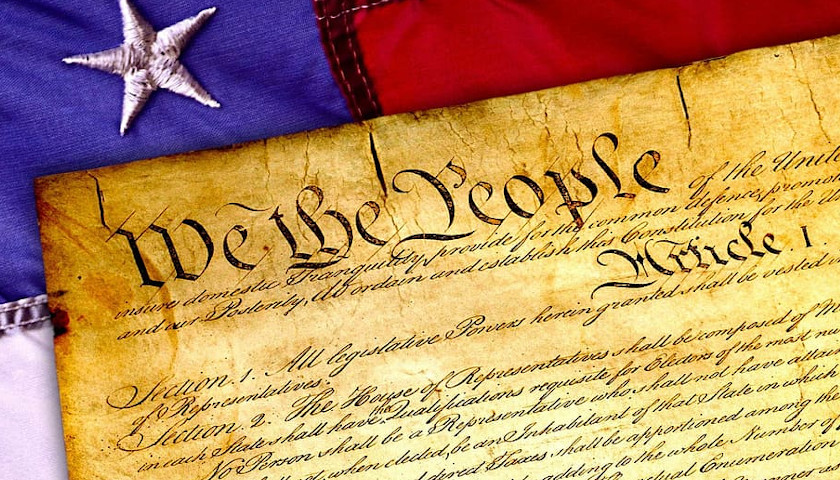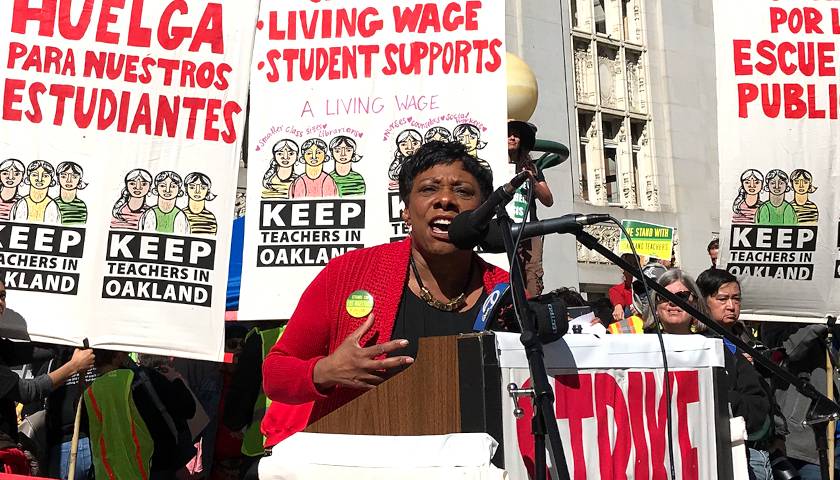by Thomas K. Hockel
In mid-March, governors across the country began issuing broad shelter-in-place orders in response to the coronavirus outbreak. The orders contain sweeping restrictions on individuals’ freedom of movement and activity in every sphere of life. They preclude people from going to work, running their businesses, convening to worship, visiting their own properties, taking a drive, attending school, and visiting with family or friends.
The orders are based on the belief that the coronavirus poses a dire threat to the health and safety of the populace. Drawing on the expertise of epidemiologists and other public health officials, as well as the statistical projections of various models on which those officials have relied, governors issued their orders under the belief that “social distancing” will slow the spread of the disease and spare the healthcare system from being overwhelmed.
Most people initially accepted the premise for the orders and complied with them. But as more and more data have become available, it is clear that the models the public health experts relied on for their projections were wrong.
Moreover, as the shelter-in-place orders continue with no end in sight, public-health officials seem to have moved the goalposts to suggest the orders should remain in effect until there are “no new cases, no deaths.”
Meanwhile, the economy is crumbling. As a result, Americans have begun questioning the scope and duration of the shelter-in-place orders, resulting in various protests and rallies.
Beyond Reasonable Necessity
Even as President Trump has created an advisory council and implementation plan in an effort to reopen the country, state governors insist they have plenary authority to make decisions about the scope of their shelter-in-place orders within their states, and continue to extend them, in some cases to extremes that strain credulity.
Police in California arrested a paddle boarder in the Pacific Ocean who was nowhere near any other individual. A man in Philadelphia was forcibly dragged off a bus for not wearing a mask. Numerous states have banned or restricted fishing. In San Diego police cited people for watching the sunset from inside their cars. In Colorado a man was arrested for playing t-ball alone in a field with his daughter. In Michigan, the governor’s order precludes the sale of seeds and gardening supplies.
Police in some locales are directly interfering with people’s exercise of enumerated First Amendment rights. In Kentucky people were issued “quarantine notices” and their license plate numbers were recorded after they drove to a parking lot to attend an Easter service from inside their cars. In North Carolina police arrested a woman for assembling to protest the shelter-in-place order. Apparently forgetting about those pesky fundamental rights, the police then tweeted, “Protesting is not an essential activity.”
These actions are well beyond what is reasonably necessary to address the risks of the virus. But what is the source of authority for state shelter-in-place orders, and what are the limits on that authority? People increasingly are raising these questions, and now would seem an opportune time to review the long history of legal rulings that address them.
The U.S. Supreme Court held in Jacobson v. Commonwealth of Massachusetts that the police power of a state embraces “reasonable regulations established directly by legislative enactment as will protect the public health and the public safety.” In Jacobson, the court upheld the conviction of a man who refused to comply with the state’s mandatory smallpox vaccination. The court concluded that the state retained control under the 10th Amendment of “all laws that relate to matters completely within its territory and which do not by their necessary operation affect the people of other states.”
However, Jacobson recognized constitutional limits on a state’s right to enact health and safety regulations, noting,
A local enactment or regulation, even if based on the acknowledged police powers of a state, must always yield in case of conflict with the exercise by the general government of any power it possesses under the Constitution, or with any right which that instrument gives or secures.
Jacobson affirmed that even in the case of health laws designed to protect the public from communicable disease, a state may not interfere beyond what is “absolutely necessary for its self-protection.”
Thus, as Jacobson and other cases have recognized, the Constitution provides a backstop, such that the state’s authority ends where the Constitution’s authority begins. Health and safety laws are no exception.
Limits on State Police Powers
One constitutional limit to state authority over health and safety laws is the Commerce Clause contained in Article I, Section 8, which authorizes Congress “to regulate Commerce with foreign Nations, and among the several States, and with Indian Tribes.”
In an 1824 case called Gibbons v. Ogden, the Supreme Court affirmed that the Constitution confers upon Congress the exclusive power to regulate interstate commerce. Even if a state law is designed to affect only economic activity within its state, Gibbons concluded that the Commerce Clause gives Congress authority where the activity regulated has some commercial connection with another state. Notably, the Court in Gibbons noted that quarantine laws are not merely health or police laws, but “they are also laws of commerce.”
Another limit to a state’s ability to enact health and safety regulations is found where a law infringes upon fundamental rights guaranteed under the Constitution. The 14th Amendment guarantees no state may “deprive any person of life, liberty, or property, without due process of law; nor deny to any person within its jurisdiction the equal protection of the laws.” This protection ensures substantive liberty rights, not just process.
The most familiar of the liberties protected by the 14th Amendment are in the Bill of Rights. They include, of course, the First Amendment rights to free exercise of religion, free speech, and the right peaceably to assemble; they also include the Second Amendment right to keep and bear arms. In addition, the Supreme Court has held that the liberty interests secured by the Constitution exceed these enumerated rights and includes “a rational continuum which, broadly speaking, includes a freedom from all substantial arbitrary impositions and purposeless restraints.”
Where a state imposes a substantial burden on a fundamental right, the state has the burden of showing that it has a compelling state interest and that the state is taking the least restrictive means toward achieving that compelling interest. This test, known as the “strict scrutiny” standard, has its roots in a case called Skinner v. State of Okl. ex rel. Williamson (1942). In that case, the Supreme Court invalidated a broad Oklahoma law that required the forced sterilization of people with multiple convictions for crimes of “moral turpitude.” The strict scrutiny test ensures that a state’s power to enact laws in the name of health and safety will not become an unreasonable pretext for overriding liberty interests secured under the Constitution.
Various state courts have explicitly recognized that states’ authority to protect against epidemic does not justify such arbitrary and unreasonable state action.
A California case (In re Shepard) from 1924 is instructive. In that case, a woman was arrested on a prostitution complaint and was ordered isolated and quarantined based on the suspicion that she was “infected with a contagious, infectious, and communicable disease.” In vacating the quarantine order the court held that the constitutional guarantees of the right to personal liberty and personal security override “mere suspicion” that someone must be isolated due to disease.
How Many Liberties Are We Willing to Cede?
Americans should be questioning whether the coronavirus presents an “immediate, imminent, and impending” threat that justifies the suspension of civil liberties and the decimation of the national economy. Whatever benefit of the doubt states had a month ago has dissipated as we have learned that the data and models the states relied on as authority for their restrictions were wrong. The states’ arguments of a compelling interest were based on dire predictions of 2 million dead Americans. Those models were wrong, and Americans should scrutinize just how “compelling” the states’ interests remain. And when governors are banning people from buying gardening supplies or citing them for watching a sunset, Americans should scrutinize whether states are employing the least restrictive means.
Over the past several months, Americans have witnessed—and in many cases accepted—a not-isolated series of infringements on their civil liberties. At the same time we continue to learn of civil rights abuses by the FBI through the use of federal court orders put in place under the USA Patriot Act after the September 11, 2001 terrorist attacks on our nation. While two decades apart, the situations are not dissimilar and are equally troubling.
As a nation we should understand that fear has a way of driving us to do things we later will regret—things like blatantly trampling on people’s constitutional rights, or, worse, simply surrendering those rights.
Americans should not be complacent, nor should they allow panic or fear to lead them to acquiesce to unreasonable restrictions on constitutionally guaranteed liberties. Instead, Americans must insist that states display a compelling interest and that the restrictions they impose are the least restrictive means necessary to address that interest. The Constitution requires nothing less.
– – –
Thomas K. Hockel is an experienced litigator and trial attorney in California. He has been practicing law in federal and state courts for over 25 years. His interests include political theory, philosophy, and constitutional jurisprudence.




